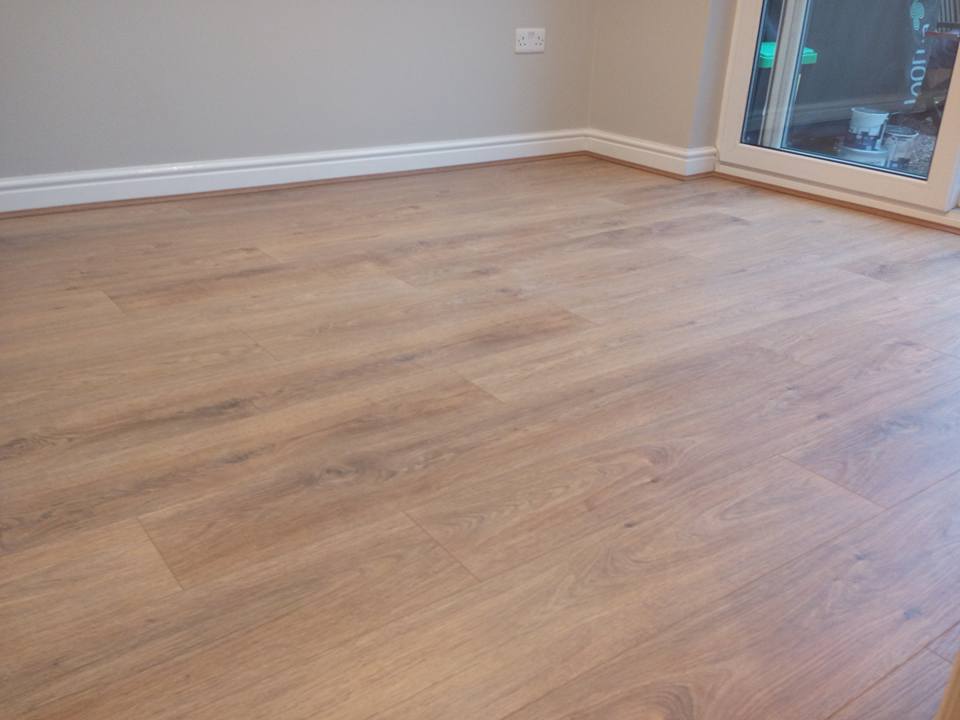Common mistakes when laying laminate flooring
/A lot of people like laminate flooring. That is because it is a cost-effective choice for the floors of homes or commercial spaces that is easy to clean and suitable for all types of rooms.
Laminate is a material that offers both flexibility and durability, as well as being quick and relatively simple to install. That does not mean that there are no potential problems that can arise when fitting it though, especially for non-professionals.
These are some of the frequent mistakes people make.
Failing to find out about sealants
It used to be said that laminate was a bad choice for floors in rooms where water is a factor, such as bathrooms. That was because it was prone to bubbles, discolouration and warping when it got wet.
This is no longer such an issue because most laminates now come with a water seal coating already added to the material. However, this is not always the case and failing to enquire about water sealing is a common mistake.
If your choice of laminate floor does not have this built-in sealant, you would need to seal it yourself with something like silicone caulk or glue to prevent the sort of damage mentioned above.
Forgetting to let it acclimate
The majority of laminate floors are made out of either medium density fibreboard (MDF) or high density fibreboard (HDF). These are man-made composite materials that are manufactured using compressed wood fibres.
What this means is that, just as with natural wood floors, the planks need to be allowed to acclimate for approximately 72 hours before they are fitted into place. Non-professionals often forget this or are just not aware of it in the first place.
Allowing planks to acclimate means giving the floor planks the opportunity to adjust to the heat levels inside your house or commercial space. If you fail to do this, the end result can be that they start to buckle or warp out of shape once they have been installed.
Not levelling the floor before installation
Another mistake that people sometimes make is not ensuring that the floor surface is smooth and level before laying the laminate on top of it. Being one of the thinner forms of flooring material, laminate will be unforgiving if the floor is uneven or has bumps or soft areas in it.
The way to avoid this is to check the floor for these imperfections and then sand or grind them out before laying your laminate. Using one of the levelling solutions that are in most shops will help to get rid of any unevenness and allow 1/8 of an inch at the absolute most.
Not putting down an underlay
Laminate floors consist of HDF and MDF planks with the chosen ‘look’ – usually something like marble, tiles or wood – laminated on top of them. However, they are not among the thickest types of flooring material on the market.
That makes them quite vulnerable to damage such as flexing or bending when you walk on them. The way to prevent this is to put an underlay beneath them, but not doing so is a fairly common error that people make when installing laminate floors.
This underlay is usually made of foam and serves as both insulation and as an absorber of shocks. It also helps to cover any slight imperfections in the surface below, even after levelling. Failing to fit an underlay will put strain on the floor and it will also make it hard to walk on.
Failing to leave space for the edges to expand
Laminate flooring is described as a type that ‘floats’ on the surface. What that means is that no adhesive is used to stick it into place, so there is slight movement when it is walked on.
While this is not a problem in itself, people often do not realise that it can lead to damage such as buckling if the laminate hits the walls and there is not enough space left when it is laid to prevent that.
Make sure that you factor in sufficient space between the laminate and the walls in the room to ensure that this does not happen to your floor.
Failing to read the installation instructions
This is a particularly common mistake – precisely because laminate is seen as a simple type of flooring to install. However, different types of laminate require different methods of installation to get the best long-term results.
A way of avoiding this and other common errors is to let a flooring professional do the job. There are firms with plenty of experience of fitting laminates for businesses and homeowners across Chester, Wrexham and other parts of the North West and Wales.
Laminate is an excellent choice of flooring, but always ensure you get it properly fitted if this is your preferred option.



